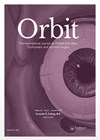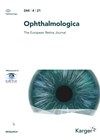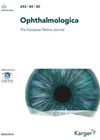You searched for "wellbeing"
Blood pressure association with primary open angle glaucoma severity
31 May 2024
| Su Young
|
EYE - Glaucoma
This prospective observational study involved 47 patients diagnosed with primary open angle glaucoma (POAG) examined to investigate their postural blood pressure response and its potential correlation with the severity of glaucomatous optic neuropathy (GON). Participants underwent intraocular pressure and systemic...
Homonymous hemianopia due to stroke presenting symptoms and lesion locations
1 July 2024
| Lauren R Hepworth
|
EYE - Neuro-ophthalmology
A retrospective case notes review was undertaken of patients diagnosed with homonymous hemianopia following a radiologically confirmed stroke. A total of 85 patients were identified by searching an electronic medical records system over an 11-year period. Data were extracted from...
Tumour characteristics influencing visual field outcomes
2 August 2024
| Lauren R Hepworth
|
EYE - Neuro-ophthalmology
This retrospective study aimed to explore correlations between pituitary tumour characteristics which influenced visual field changes. Cases of transsphenoidal surgery from a six-year period resulting in a pathologic diagnosis of pituitary adenoma from a single centre were identified. Individuals were...
Proptosis reduction with teprotumumab versus surgical decompression
This study aims to explore whether fat-to-muscle ratio (FMR) can be used to determine the efficacy of teprotumumab when compared to surgical decompression. Simply put, a high FMR equates to more fat expansion and low FMR equates to more muscle...Being more consistent with screening for convergence insufficiency
This prospective cases series aimed to identify the average values and sensitivity of clinical measurements of convergence to aid diagnosis of convergence insufficiency (CI). Children and adults presenting over a two-year period with symptoms including diplopia when reading, headache with...Corneal and astigmatic changes after medial rectus recession surgery of 6mm
This study prospectively compared changes in astigmatism before and two months after unilateral recession of medial rectus muscles using Pentacam. The fellow unoperated eye was used as the control eye. The study included 66 eyes and 33 patients; 21 males,...Intermittent exotropia and refractive change in children
The authors present a retrospective case review with the aim of examining the relationship between refractive change and intermittent exotropia (IXT). The medical records of patients were reviewed for those aged 18 years old and younger diagnosed with IXT with...Submacular haemorrhage associated with nAMD: A meta-analysis and meta-regression on use of tPA and anti-VEGFs
1 November 2024
| Sofia Rokerya
|
EYE - Vitreo-Retinal
The aim of this study was to evaluate the efficacy of a combination of tPA and anti-VEGF in the treatment of submacular haemorrhage (SMH) associated with neovascular age-related macular degeneration (nAMD). A systematic review meta-analysis following PRISMA guidelines, focusing on...
Comparing retinal thickness in Parkinson’s disease, essential tremor and healthy controls
4 December 2024
| Lauren R Hepworth
|
EYE - Neuro-ophthalmology
This study aimed to compare retinal findings in chronic essential tremor (ET), early Parkinson’s disease (PD) and healthy controls. Those recruited with ET had to have received a diagnosis a minimum of three years previous and those with PD had...
Update: Non-infectious retinal vasculitis
2 December 2024
| Sofia Rokerya
|
EYE - Vitreo-Retinal
This review article summarises the update on non-infectious retinal vasculitis (RV). It is primarily classified based on the type of retinal vessels involved and further sub-classified as occlusive or nonocclusive. Clinically it can occur as an isolated ocular entity or...
Junior doctors in emergency departments lack confidence when managing ophthalmic emergencies
30 January 2025
| James Kirkpatrick
|
EYE - Cornea
This systematic review assessed the confidence of doctors in the UK working in emergency departments (EDs) to manage ophthalmic emergencies, with secondary outcomes looking at doctor’s confidence in performing fundoscopy and using the slit-lamp, and training received in the ED....












